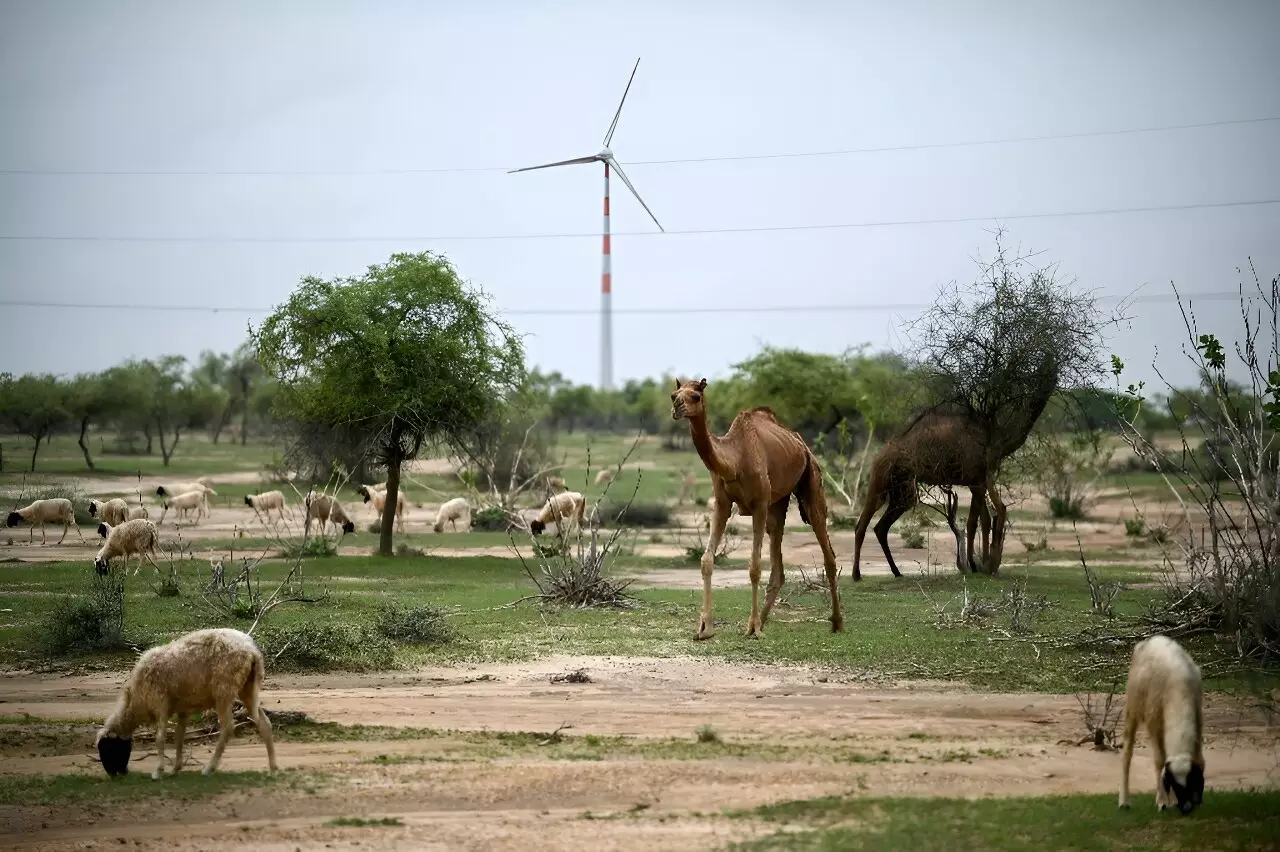In the quest for greener energy solutions, India, one of the world’s most populous nations and the third-largest emitter of greenhouse gases, faces a significant challenge in balancing developmental progress with the well-being of its communities. The Thar desert, a region characterized by its barren landscape and cultural heritage, has become a battleground for renewable energy projects, particularly wind farms. Here, the government’s ambition to expand its non-fossil fuel energy capacity starkly contrasts with the plight of local residents, who claim that their land and way of life are being sacrificed for a national agenda.
As global climate patterns shift, the impacts of climate change are increasingly felt across India, resulting in devastating heatwaves, floods, and droughts. The government’s response has been the aggressive expansion of renewable energy facilities, such as those in Rajasthan, where towering wind turbines are dotting the landscape. Yet, this green energy boom has not translated into benefits for all; for many locals, these wind farms represent a loss of livelihood, as traditional grazing lands are repurposed for large-scale energy production.
Local inhabitants, particularly livestock herders like Nena Ram, voice their frustrations regarding the encroachment of wind power installations on critical grazing lands. Elderly herders, who have supported themselves and their families for generations through livestock farming, now find their practices upended by the arrival of massive wind turbines and the heavy construction vehicles that precede them. The sacred groves known as “orans,” which have historically served as essential water collection areas for livestock, have reportedly suffered disrepair and contamination due to recent construction efforts—a source of deep-seated irritation for the communities that have protected these ecological treasures for centuries.
The harsh realities faced by farmers in the desert are compounded by the impacts of climate change, which they contend has already disrupted their agricultural practices. Those living in the shadow of wind turbines struggle with diminished resources as their land becomes increasingly unsuitable for grazing and farming. The irony is palpable: while the government endeavors to mitigate climate change by investing in renewable energy, the very same initiatives appear to overlook or even exacerbate local challenges.
The Promises and Pitfalls of Corporate Engagement
While corporations like Adani Group and Suzlon tout their contributions to community welfare, tensions run high among the locals who claim that these companies’ promises do not align with their lived experiences. Industry leaders profess their commitment to sustainable development that includes improvements in health, education, and support for local livestock economies. However, many villagers feel that the benefits are either insufficient or misaligned with the immediate needs of their communities, as the economic incentives fail to adequately compensate for the profound disruptions that have accompanied the arrival of wind farms.
With power generation being prioritized for booming industrial centers, locals have reported protracted power outages that can last for days. The lack of reliable electricity exacerbates the challenges of living in an area subjected to extreme temperatures—reaching an alarming 50 degrees Celsius (122 Fahrenheit) during the sweltering summers. Environmental activists echo the sentiment, revealing the stark disconnection between corporate progress and the daily reality of those living along the fringes of development.
As the rapid expansion of renewable energy projects floods the desert landscape, criticisms extend beyond human encroachment to include the potential damage inflicted on local biodiversity. Species that have thrived in these environments for generations, such as the critically endangered Great Indian Bustard, now face severe threats due to the proliferation of wind farms and associated infrastructures like overhead power lines. Environmental experts have made alarming predictions regarding the decline of these bird populations, highlighting the need for a more cautious approach to renewable energy development—one that takes into account the ecological balance of the area.
Despite an initial Supreme Court ruling to place power lines underground in critical bird habitats, further government pushbacks emphasize the tension between the urgency of renewable energy goals and environmental stewardship. The tragic reality is that while the country aims for energy independence, the delicate ecosystems that contribute to the region’s biological diversity are confronted with jeopardy.
The Search for Equitable Solutions
The situation in India’s Thar desert encapsulates a broader global challenge: the need for a sustainable transition to renewable energy without sidelining local communities. As India strides towards ambitious climate targets, a reevaluation of policies emphasizing local needs alongside national objectives is essential. The narrative of progress through renewable energy should encompass equity and environmental ethics, ensuring that the very people contributing to clean energy do not find themselves further marginalized.
Ultimately, to truly advance toward a sustainable future, a collaborative approach is paramount—one that integrates local voices into the decision-making processes and addresses the interconnected issues of environmental conservation, community welfare, and energy production. Only then can the ambitions for a sustainable energy landscape align harmoniously with the needs of those who have been caretakers of this land for generations.


Leave a Reply